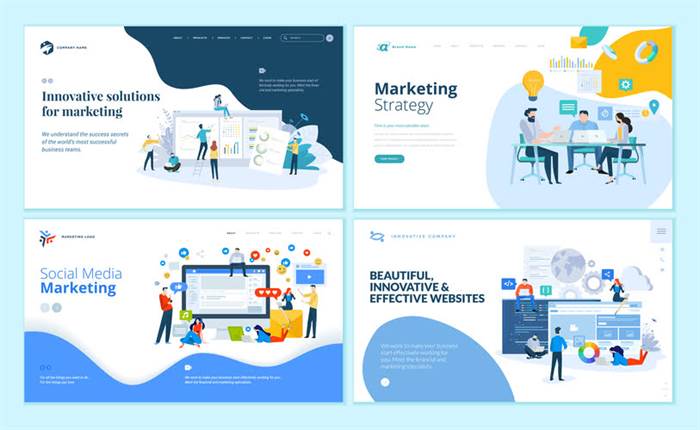What is continuous integration CI? GitLab
-
AUTHOR: admin
-
febrero 14, 2023
What is continuous integration CI? GitLab
Once integration tests are performed, another level of testing called system testing can begin. The focus of system tests are to make sure that groups of components function correctly as a cohesive whole. Unit tests are responsible for testing individual elements of code in an isolated and highly targeted way. The functionality of individual functions and classes are tested on their own.

Not only can the existing code base change, but new code can be added as well as new libraries, and other resources that create dependencies, and potential conflicts. Continuous integration helps your team be more productive by freeing developers from manual tasks and encouraging behaviors that help reduce the number of errors and bugs released to customers. A practical guide to the continuous integration/continuous delivery (CI/CD) pipeline..
Habits of Highly Effective DevOps
It will help your engineering organization execute quicker and more effectively. Once version control is in place, finding a version control hosting platform is the next move. Most modern version control hosting tools have support and features built in for CI. Some popular version control hosting platforms are Bitbucket, Github, and Gitlab. If the target code base for a CI install does not have a VCS, step one is installing a VCS. Test Driven Development (TDD) is the practice of writing out the test code and test cases before doing any actual feature coding.
- Continuous integration is an agile and DevOps best practice of routinely integrating code changes into the main branch of a repository, and testing the changes, as early and often as possible.
- Developers can rapidly push changes and experiment with new feature ideas to help improve the user experience.
- Each integration is verified by an automated build (including test) to detect integration errors as quickly as possible.
- There are many different ways you can implement CI/CD based on your preferred application development strategy and cloud provider.
- Feedback allows teams to measure results so they have firm evidence on which to base new projects.
- Frequent integration can create friction when an approach to automation does not align with quality assurance measures in place.
Smoke tests are generally run at the very start of each testing cycle as a sanity check before running a more complete test suite. By committing to the shared branch at the earliest possible stage and then continually throughout development, the cost of integration is diminished and unrelated work is synchronized regularly. You should also ensure you can see who is currently building and what changes they’ve made, along with a history of changes so everyone on the team knows where the project is and where it’s going. The faster the build, the faster you can detect bugs, and the faster you can integrate your build into the mainline.
Continuous integration vs. delivery vs. deployment
As such, single service integration tests such as the one we just created seem to represent an optimal balance. I created two tests so that I could measure the one-time setup time vs. the marginal cost for any additional test. We see a one-time cost of 6.5 seconds for the test run, with almost no penalty at all for each consecutive test. Now we will create a project/Job2 which will build after a fixed interval of time (i.e. after every minute) which we can define by using Poll SCM. If you are looking to learn CI/CD pipeline and excel in DevOps practices, do consider enrolling in Post Graduate Program In DevOps.
Continuous deployment can be defined as a software engineering approach where code changes made by the development team are automatically tested and deployed to the production environment. This is done without any human intervention, ensuring ci/cd pipeline monitoring that new features, updates, and bug fixes are delivered to end users as quickly as possible. In modern application development, the goal is to have multiple developers working simultaneously on different features of the same app.
Steps for building a CI/CD team
If you want to catch bugs quickly and often, then you should include automated tests in the build process. Functional tests work over larger areas of the code base and model user workflows. In web applications, for example, HTTPUnit and Selenium directly interact with the user interface to test the product. (Or, in the case of interpreted languages, simply pulls all the pieces together.) Step two ensures the code works as designed. The surest way to do this is with a series of automated tests that validate all levels of the product. Making builds readily available to stakeholders and testers can reduce the amount of rework necessary when rebuilding a feature that doesn’t meet requirements.
Finally, you’ll need to make sure that every feature that gets developed has automated tests. It may look like you will slow down development but in fact, this is going to reduce drastically the amount of time that your team spends on fixing https://www.globalcloudteam.com/ regression or bugs introduced in every iteration. You will also be able to make changes to your codebase with confidence as your test suite will be able to rapidly make sure that all the previously developed features work as expected.
Too many tools in too many places?
It will make it harder for engineering to estimate time of delivery on requests because the time to integrate new changes becomes an unknown risk. Continuous Feedback is a new practice that embraces the concept of getting more out of your code runtime data. Shorter feedback loops accelerate the release process because it reduces the need to troubleshoot, increases developer understanding of the code, and allows dealing with issues much earlier in the process. Trying to balance the faster easier-to-write unit tests with the heavy wielder test types resulted in the concept of the ‘testing pyramid’. One methodology that has gained considerable traction in this regard is continuous deployment.

If a team doesn’t currently have a CI solution in place, it can require some effort to pick one and get started. Thus, considerations need to be made around the existing engineering infrastructure when installing a CI pipeline. The following hypothetical use case illustrates how two software developers can use continuous integration to improve their DevOps process.
Manage Business and Software Risk
Just because a program is up and running, of course, doesn’t necessarily mean that it functions as it should. Including automated tests in the build process can help to ensure that any bugs are caught quicker. However, self-testing code requires a series of automated unit tests that can analyze a large part of the code and be self-checking. Finally, there’s continuous deployment, where the software is automatically launched and distributed to end users.

Each new feature coming down the CI pipeline should have an accompanying set of tests to assert that the new code is behaving as expected. Product teams can test ideas and iterate product designs faster with an optimized CI platform. 😁 We are now collecting information about our code locally which we’ll be able to see in a second once we run our tests. This time, instead of looking at simply the functional aspects of the code, we can learn more about what it does.

0 comment